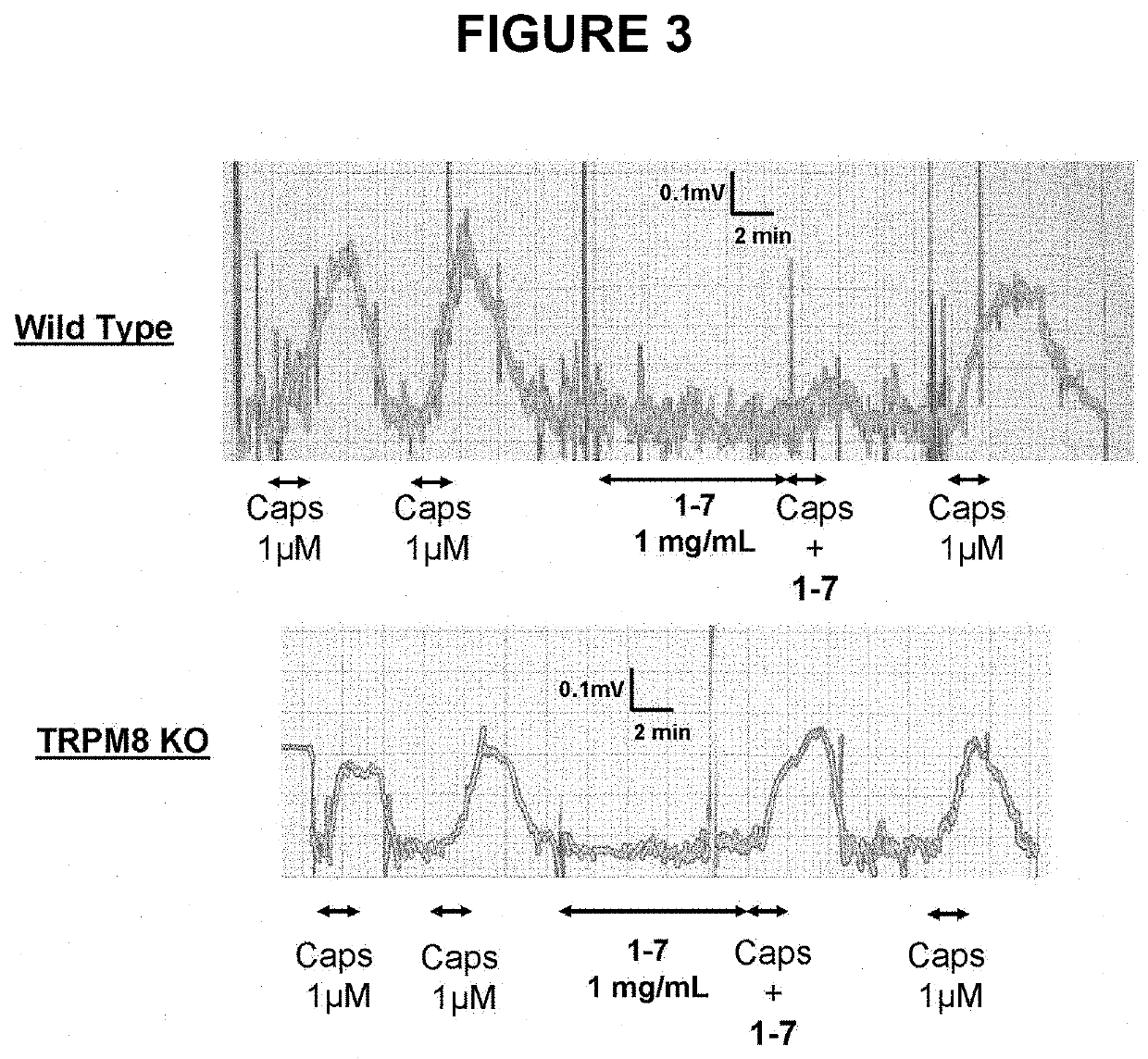Di-isopropyl-phosphinoyl-alkanes (DAPA) compounds as topical agents for the treatment of sensory discomfort
a technology of diisopropylphosphinoylalkanes and diisopropylphosphinoylalkanes, which is applied in the direction of phosphorous compound active ingredients, drug compositions, aerosol delivery, etc., can solve the problems of reduced efficiency of accomplishment, increased discomfort with lessened capacity, and non-specific symptoms of fatigu
- Summary
- Abstract
- Description
- Claims
- Application Information
AI Technical Summary
Problems solved by technology
Method used
Image
Examples
case study 1
[0263]A 65-year old male is an avid snooker player and likes to frequent the snooker parlours of London and Hong Kong. He plays for small wagers with his friends, but with advancing age his game has deteriorated and he can only play about eight frames in one day. He uses ice-cold towels on his face and prescription glasses to help him during games, but feels that it is the lack of concentration and the planning of sequences of shots that hinders his game and prevents him from completing “breaks” (a continuous accumulation of points in a “run”). He volunteered to try wipes containing DIPA-1-7. There was a remarkable transformation in his game. He moved faster from shot to shot and the planning and execution was crisp. The number of frames per session increased as well as his frequency of play. He had his longest career break of 80 points and was ecstatic. He continues to use the wipes as an aid to his snooker game. He also noted that enhancement of his cognitive facilities could be r...
case study 2
[0268]A 48-year old female account executive was a busy professional at a large financial institution. Her husband was a successful architect. She had two teenage children and she was constantly short of time to do her chores. At the end of the day, she was frequently physically and mentally exhausted and would fall asleep early after evening meals. Due to recent marital difficulties, she felt tired and weary most of the time, and her domestic and professional demeanour, in dress and etiquette, began to deteriorate. She did not suffer from any chronic physical illness, but she was rated as having “moderate fatigue” on the Brief Fatigue Inventory (BFI) after several interviews and considered “depressed” by her physician. She volunteered to use the wipes containing DIPA-1-7 and was instructed not to use more than one per day. After two days of use, she reported that the wipes improved her mood and interest in external events. She was more energetic and positive. She completed her assi...
case study 3
[0273]In another series of studies, a towelette was used for delivery instead of a cotton wipe. The towelette consisted of a plastic wrap (weight 1.1 g), a 23 cm×26 cm towel of non-woven lace (weight 3.4 to 3.5 g) and a liquid composition (14 to 15 mL) which was automatically added to and sealed off in the wrapper. Automated machinery for producing towelettes are well-known to the art. Here, the towelettes were produced by Kank Factor, LLC, San Francisco (721 Commercial Street, San Francisco Calif. 94108, www.3LWipes.com). Distilled water (as placebo controls) or DIPA-1-7 dissolved in distilled water (at a concentration of 1 to 5 mg / mL) was incorporated into the towelette. The volume per self-application depended on the application site, but was about 0.3 mL to 0.5 mL for the face and brow, but could be higher if wiping of the torso was also included.
[0274]The towelettes were stored in a refrigerator but then stored at room temperature for at least 1 hour before use. Effective steri...
PUM
| Property | Measurement | Unit |
|---|---|---|
| concentration | aaaaa | aaaaa |
| concentration | aaaaa | aaaaa |
| concentration | aaaaa | aaaaa |
Abstract
Description
Claims
Application Information
 Login to View More
Login to View More - R&D
- Intellectual Property
- Life Sciences
- Materials
- Tech Scout
- Unparalleled Data Quality
- Higher Quality Content
- 60% Fewer Hallucinations
Browse by: Latest US Patents, China's latest patents, Technical Efficacy Thesaurus, Application Domain, Technology Topic, Popular Technical Reports.
© 2025 PatSnap. All rights reserved.Legal|Privacy policy|Modern Slavery Act Transparency Statement|Sitemap|About US| Contact US: help@patsnap.com



